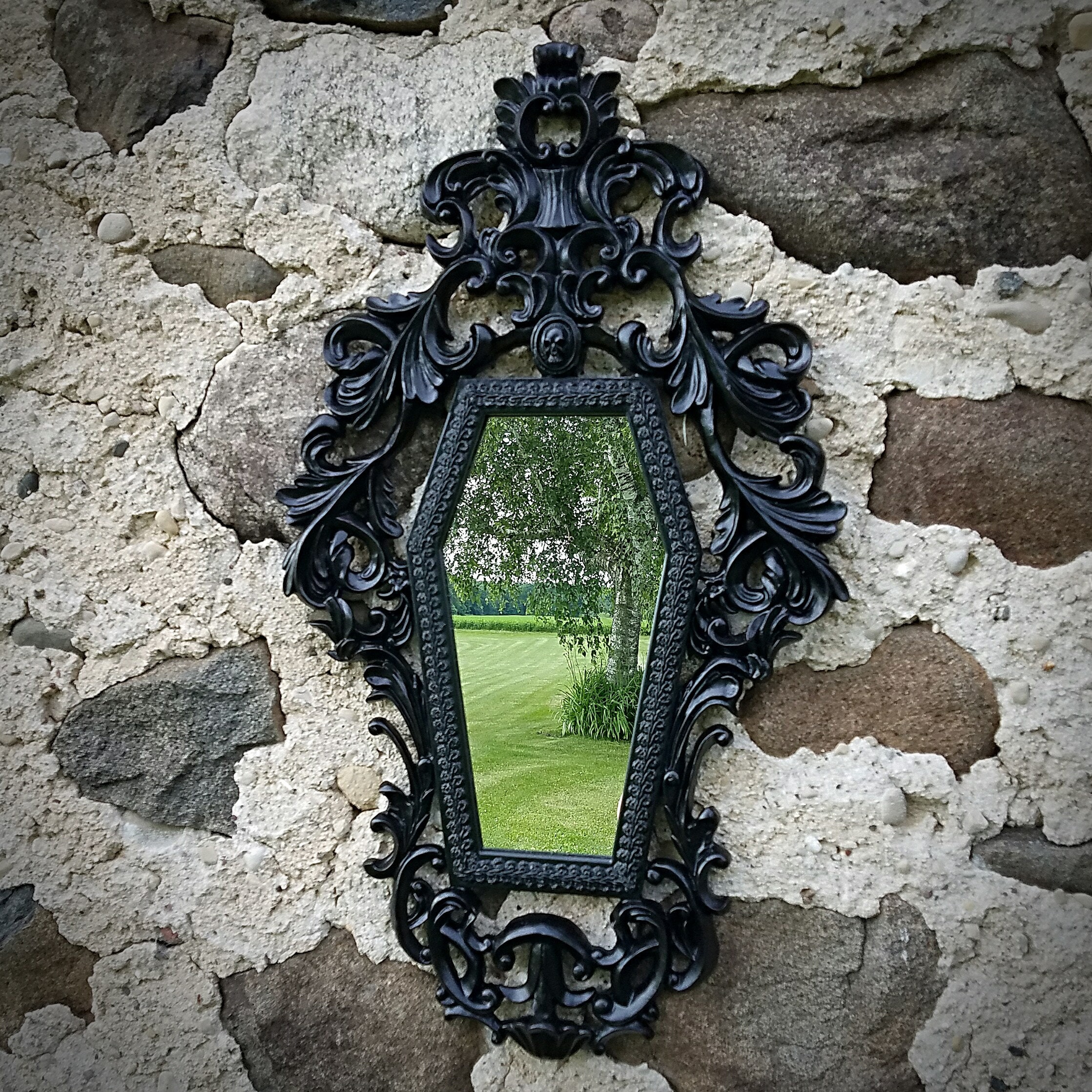Gothic Mirror Symbolism

Gothic mirror – Mirrors have always held a fascination for humanity, reflecting our own image back to us and offering a glimpse into our inner selves. In Gothic literature, mirrors take on a deeper significance, becoming powerful symbols of mystery, suspense, and the hidden depths of the human psyche.
Gothic mirrors, with their ornate frames and aged glass, evoke a sense of mystery and intrigue. For a modern take on this classic, consider tempered glass wall art. Its sleek, minimalist design and reflective surface create a striking contrast to the intricate details of a gothic mirror, offering a unique blend of old-world charm and contemporary style.
Mirrors in Gothic literature often serve as a reflection of the characters’ inner selves. They reveal the characters’ hidden desires, fears, and secrets, exposing the darkness that lurks within their souls. Mirrors can also be used to create a sense of mystery and suspense, as they can hint at hidden truths or foreshadow future events.
The Mirror as a Reflection of the Inner Self, Gothic mirror
Mirrors in Gothic literature often reflect the characters’ inner selves, revealing their hidden desires, fears, and secrets. In the novel “The Picture of Dorian Gray” by Oscar Wilde, the protagonist Dorian Gray’s portrait serves as a mirror that reflects his true self. As Dorian descends into a life of sin and debauchery, his portrait becomes increasingly醜陋, while his physical appearance remains youthful and beautiful. The portrait becomes a constant reminder of Dorian’s inner corruption, and it ultimately leads to his downfall.
Mirrors can also be used to reveal the characters’ hidden fears. In the short story “The Tell-Tale Heart” by Edgar Allan Poe, the narrator’s obsession with his victim’s “vulture eye” leads him to murder the old man. After the murder, the narrator begins to see the old man’s eye everywhere he looks, even in the mirror. The eye becomes a symbol of the narrator’s guilt and paranoia, and it ultimately drives him to madness.
Mirrors can also be used to foreshadow future events. In the novel “Dracula” by Bram Stoker, the protagonist Jonathan Harker’s encounter with Dracula in his castle is foreshadowed by a mirror in his room. The mirror reflects Harker’s own image, but it also shows him a glimpse of Dracula’s true nature. The mirror becomes a symbol of the danger that Harker is facing, and it foreshadows the horrors that he will soon experience.
The ornate carvings of a gothic mirror reflect an ethereal glow, casting an enigmatic ambiance upon the room. Its depths beckon, inviting one to gaze into the realm of the unknown. Amidst the shadows, the flicker of floating candle vases dances, their soft light illuminating the mirror’s intricate details.
Like a portal to another dimension, the gothic mirror becomes a vessel for both introspection and the exploration of the unseen.
Gothic Mirror Imagery

Gothic literature frequently employs mirrors as potent symbols, creating an atmosphere of isolation, alienation, and psychological turmoil. These reflective surfaces serve as portals into the characters’ inner worlds, revealing their hidden fears and anxieties.
Mirrors and Isolation
Mirrors can isolate characters by emphasizing their physical and emotional solitude. In “The Picture of Dorian Gray” by Oscar Wilde, the titular character’s portrait reflects his youthful beauty while he ages and deteriorates. This stark contrast highlights Dorian’s isolation from his true self, as he becomes increasingly alienated from his own reflection.
Mirrors and Alienation
Mirrors can also alienate characters by creating a sense of otherness. In “Wuthering Heights” by Emily Brontë, the mirror in Heathcliff’s room reflects his dark and brooding nature. The mirror serves as a constant reminder of his outsider status and his alienation from the society around him.
Mirrors and Fear
Mirrors can reflect characters’ fears and anxieties, amplifying their psychological torment. In “The Tell-Tale Heart” by Edgar Allan Poe, the narrator’s obsession with the old man’s “vulture eye” is reflected in the mirror. This reflection intensifies the narrator’s fear and paranoia, leading him to commit a gruesome murder.
Mirrors and the Supernatural
In Gothic literature, mirrors often have supernatural associations. In “The Fall of the House of Usher” by Edgar Allan Poe, the narrator’s encounter with the dying Roderick Usher takes place in a room dominated by a large, antique mirror. The mirror reflects the decaying mansion and its inhabitants, creating an eerie and otherworldly atmosphere.
Gothic Mirror as a Literary Device

Gothic mirrors are more than mere decorative objects; they serve as potent literary devices that contribute significantly to the plot and atmosphere of Gothic novels.
Mirrors in Gothic literature often foreshadow future events, providing subtle hints and clues that build suspense and anticipation. They offer glimpses into hidden realms, revealing secrets and foreshadowing the fate of characters. For instance, in Ann Radcliffe’s “The Mysteries of Udolpho,” a mirror reflects a mysterious figure, foreshadowing the presence of a hidden villain.
Moreover, mirrors are used to create a sense of closure or resolution in Gothic novels. By reflecting the protagonist’s journey and growth, they symbolize the character’s transformation and the resolution of internal conflicts. In “Jane Eyre” by Charlotte Brontë, the mirror serves as a witness to Jane’s journey from a timid and oppressed orphan to a confident and independent woman.